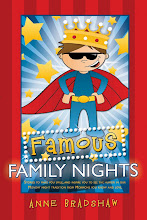Tradition has it that the Pope, while admiring Michelangelo's David, asked the celebrated artist and sculptor, "How did you know what to chip away?"
Michelangelo was said to have replied, "It's easy. I just removed everything that didn't look like David."
While that's a simplistic way of explaining an artist's enigmatic and (to those who feel they lack talent) incomprehensible methods of finishing something incredible, it's also no less than true. In fiction, as in other arts, we authors have to chip our way through huge blocks of materials, only arriving at "perfection" when the last unnecessary word is deleted.
We can liken our raw story ideas to the huge block of marble pictured above. It's massive, substantial. In the author's mind, it's a terrific story, a meaningful contribution to the existing body of literature. In fact, the author can envision its final state, just as Michelangelo saw his David before he ever picked up the chisel.
But there's so much work to be done! Taking the ideas for characters, plot, settings, and scenes and typing out a first draft is the first major step. By the last page, our "statue" may have recognizable arms, legs, and a head. But still, it barely looks human, an anthropomorphic monster that may contain a great story, but in many respects resembles the product of a monkey at a typewriter. It's packed with redundant description, obscurred by cliche, bogged down with dead-weight adverbs and bursting with boring backstory.
At this point, you can take a hard look at what you've created and break out the finer tools. In your revisions, you whittle away first the big things that make you cringe, then the smaller ones. You progress from the chapter level, to each scene, then paragraph by paragraph, sentence by sentence, until each word rings right. You will incorporate feedback from alpha readers and have proofreaders point out your technical errors. You may re-write the entire thing several times during this process. For the most part, you delete and make more concise, but in some cases you may add new scenes and dialogue. That's one advantage we have over the sculptor: If we accidentally take off something that wasn't meant to go, we can always go back and put it in.
Our final edits give the sheen of realism to our work, and at last we arrive at that day where we're sure that not one word will pull readers out of the world we have worked so hard to create, and that they will feel the emotions we so want them to feel. In our minds, our work has progressed all the way from the rough, formless block of stone to something else entirely, and we send it off to agents or publishers with all the confidence in the world.



















3 comments:
This is a wonderful analogy, and it really does make all the work (all the dead darlings) mean something. And that really is the beauty of writing, even when we're afraid to delete something we know we can always add to make up for the lost meaning.
Excellent post Michael. I am VERY thankful that as writers we have the opportunity to correct our corrections.
I'm also thankful for modern devices that make these changes SO much easier. Imagine doing this on a typewriter or, gasp, with no spell check or thesaurus.
Post a Comment